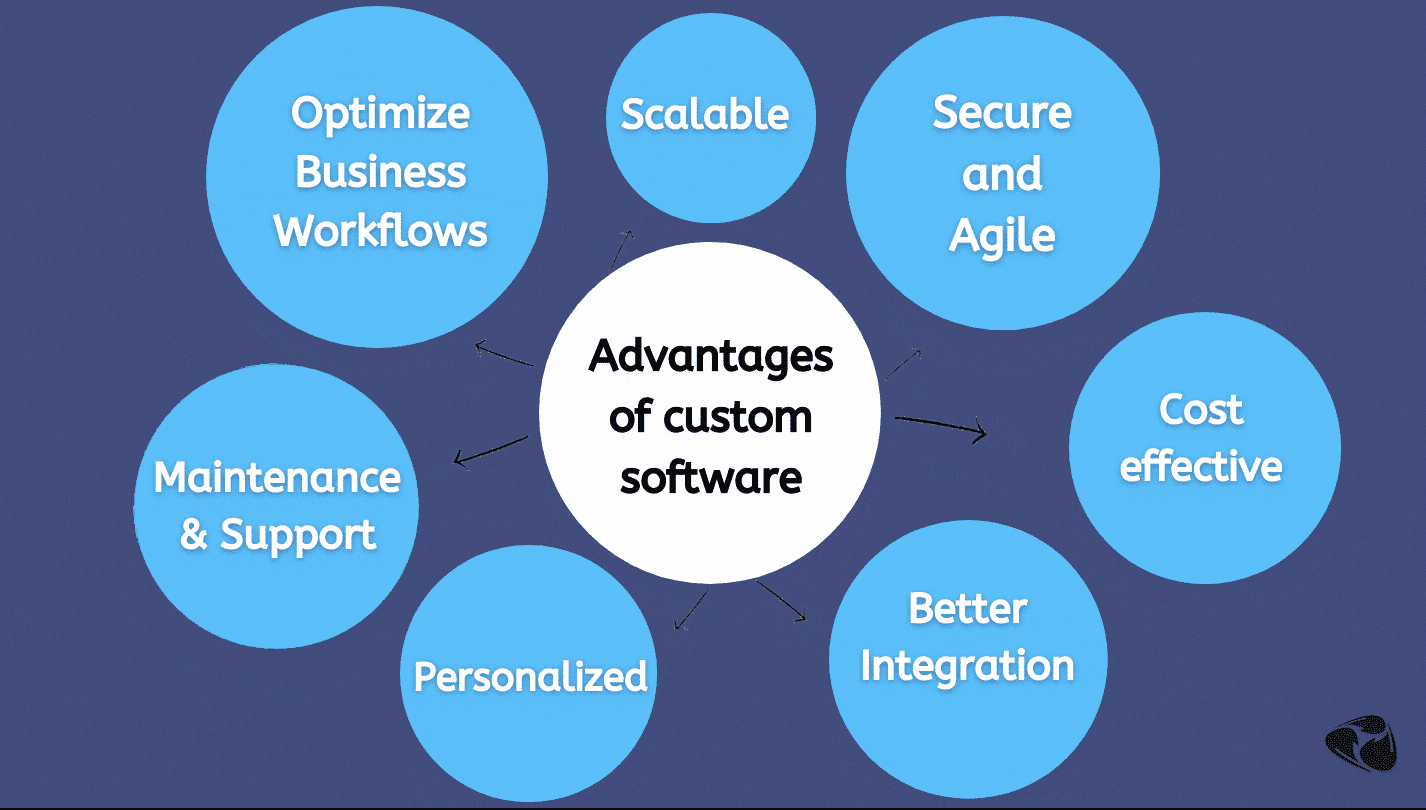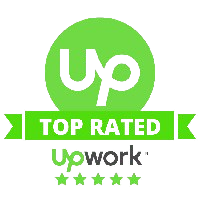Top 7 Best Practices for Custom Software Development
Table of Contents
Introduction
When an organization has specific software needs that can’t be addressed with off-the-shelf software, it hires a team for custom software development, to circumvent the risks such as missed deadlines, exceeded budget, miscommunication, solution overloaded with features, IP rights conflict, and weak code ownership.
If you are looking for the creation of a unique future-ready platform blended with automation for your business to be designed for specific users, then you need a precise plan for Custom Software Development. Well, fear not – we’ve made a thorough guide. To find out how to make all the right choices, keep reading.

1. Document every stage of development
A detailed scope analysis and requirement planning will guarantee that everything serves as coveted. Once you outline your needs, finely documenting the complete process becomes an essential determinant in all stages of development and implementation.
Make sure you have a:
- test design and checklist to ensure the software are fully vetted
- statement of scope to work only on pre-defined deliverables
- implementation plan that defines timelines and users
- user documentation with FAQs
Performing precise documentation will not only give you a kind of assurance, but it’s also crucial in defining the best utilization of the software, expected resources, and likewise.
2. Keep an eye on your budget
The key significant consideration here is to determine the development budget and picking the right pricing model. Hire a custom software product development company that matches your needs and budget.
Below are the factors that impact potential development costs:
- Number of working hours needed to develop a solution, that depends upon-
– complexity
– functionalities and features
– product Design and UI/UX
– platform(s) - Hourly rate, that varies upon-
– location of development partner
– skills or kind of developers needed - Monthly/annually cost of 3rd party APIs and tools to be used. Charges of cloud services, web and domain hosting, and SSL, for instance.
- A buffer of 20%-30% to the total cost for unforeseen circumstances
You can prefer to adopt one of two pricing models today:Time & Material Fixed Price Pay for the number of hours the developer has worked plus the costs of technologies
Agree upon a fixed cost you’ll pay to your development partner
Flexible – to suit projects that don’t have a defined scope beforehand
You need to determine the full project timeline beforehand to calculate the costs
Costs may change throughout the process
Cost will not change halfway through
You’ll be more involved in the entire process to have control of expenses
Works well coupled with the Waterfall methodology
So, how much does custom software cost? Get a Free Estimate
3. Hire The Right Team Of Professionals
Setting up a skilled team of professionals leads you towards the overall objective and helps achieve your dream product. The most reliable way to build quality custom software is to outsource your project to a custom software development company that helps you get an efficient and reliable application with the assistance of a team of technical experts who have successfully designed and implemented multiple custom software.
Things to check while finalizing the custom software development company:
- company website and history
- company's location
- size of the company
- domain expertise
- references, and review
- security, and IP policy
Hire a team of rockstars who have:
- required and experienced workforce
- effective communication to guide your team at every step
- some developers, testers, subject-matter experts, and a project lead to direct the overall initiative
- practiced simple coding and hassle-free process to deliver the final solutions within the specified time frame
Have a project that you would like discuss?
4. Choose The Right Technology Stack
Understanding the necessity of custom software and what benefits it will offer, is your primary goal. Your needs can range from automating the flow to accelerating productivity, advancing incompetent processes, or making the customer journey seamless. Once this is identified, it would be pretty obvious for you to accost experts and meet preferred technology as per your business calls.
Utilizing the power of the right technologies for development goes a long way. This includes all the programming languages, frameworks, libraries, and other development tools that are used during development to build and run your product. Hence, defining them beforehand is vital to choose the right team of experts. Be mindful – don’t rely wholly on your contenders’ tech stack.
Below are the 4 parameters you need to consider while choosing the most suitable stack for web development:
- Ultimate product – Define the usability, target user, and impact of your product
- Platforms – Decide on web application, mobile app, desktop app, or all of them
- Development – Choose stable technologies and complementary tools to speed up development
- Talent pool – Picking technologies used by most developers, make it easier to hire them at a lower cost
As the development possesses two main components, front-end, and back-end development, you’ll need to choose tech stacks for both of them:
Front-end Stack (Client-side) | Back-end Technology (Server-side) |
|
|
5. Set Success Parameters & Realistic Milestones
First things first – Know your Requirements. The very first thing your development partner will ask you is about your software development requirements. Be clear about the type of software you are seeking and what you wish to get from the software, how it can help your business, the way it can influence your business operation.
Getting the desirable product requires a realistic plan with achievable milestones. So, the next step for you is to define these milestones which will help you stay accountable and on track. These are the various stages of the development that should be completed at a certain time and budget amount. You’ll need to:
- chalk out an effective plan
- plan the desired workflows
- set out a complete roadmap for implementation (consider various factors like time, budget, etc.)
- define project success criteria that are acceptable to the end-user, customer, and stakeholders
- carry out the development work
- review the work at each scheduled milestone
- get feedback from stakeholder/ immediate users at each stage
- recognize areas that need improvement
Defining these things is so important to the overall project management process that methods such as Six Sigma give “Define” its phase. Since your software application needs can be novel, anything that is created should be tested and accomplished with qualitative benchmarks and then setting a real milestone.
6. Choose The Right Methodology / SDLC

Software Development Life Cycle (SDLC) is the methodology followed during the development process by any development company. It is a set of tasks that have to be fulfilled at every stage and below are two most common types:
1. The Agile Methodology : The agile development cycle is not linear – it is iterative, and each iteration results in a working product release and tracks the work being done on a microscopic level.
PROS | CONS |
Product Goals are defined with Stakeholder | Requires considerable expertise and discipline |
Strong collaboration | Planning may be weak |
Active customer feedback mechanism | Timing must be very clear for tracking |
Adaptive and flexible to changes | Requires dedicated skilled resources |
Rapid and outcome-driven | Final product may be entirely different from expectations |
2. The Waterfall Model: If you are sure your requirements reflect the needs and want of your end-users and your hypotheses are correct, then you must opt for the Waterfall model.
PROS | CONS |
Clear, thorough documentation and planning | Documentation takes a huge amount of time |
Simple to follow, implement and manage | Incapable for intense support and maintenance |
Quick to accomplish; Timely delivery | Delivery only at the end |
Fixed cost and predictability | Modifying the requirements during development is highly challenging |
Strong, disciplined process | Less flexible; No room for process changes or simultaneous workflow |
All in all, the Agile software development life cycle is a better choice if you are unsure about your project requirements and you aim for a revolutionary solution using advanced technologies. It is less rigid than Waterfall as you can introduce changes in-between iterations.
Before launching the product, testing an application using all essential parameters will make the application perform seamlessly on different devices and browsers. To ensure all information and data remain safe, test every element and logic and review the security certificate & encryption.
Testing usually occurs on two levels:
1. Technical testing – To test the working of foundational elements, QA professionals conduct testing of software under different scenarios and on multiple devices to check whether it works as per the expectation or not.
2. User testing – Beta (actual) users check if the software works as expected and desired and point out issues if they recognize them.
Of course, both testings have their value in interpreting the quality of the developed software.
7. Perform detailed QA & Testing, & Security
Discover problems before clients or end-users do!
Custom software must have the least error when it is rolled out for usage. This can be achieved through regular quality assurance and testing. Checking the versatility of the software developed in all environments is the most essential step, once the software application is built, and is ready to be utilized by the business.
Even in the initial stages of development, testing is a vital aspect that needs to be considered to:
- Track every bug that evolved and resolved
- Avoid any errors or failures
- Give plenty of time to make corrections
Before launching the product, testing an application using all essential parameters will make the application perform seamlessly on different devices and browsers. To ensure all information and data remain safe, test every element and logic and review the security certificate & encryption.
Testing usually occurs on two levels:
1. Technical testing – To test the working of foundational elements, QA professionals conduct testing of software under different scenarios and on multiple devices to check whether it works as per the expectation or not.
2. User testing – Beta (actual) users check if the software works as expected and desired and point out issues if they recognize them.
Of course, both testings have their value in interpreting the quality of the developed software.
Conclusion
Custom software is the backbone of your business improvement and the custom software developing companies will back you with their robust, responsive, and high-performing services. We believe that our article has made it explicit what’s ahead of you. Adherence to these 7 practices will manifest into custom software. In case you are searching for a development company, get in touch with us to discuss your project. We’ll help you make all the best choices and avoid typical pitfalls so that you can get your explanation out there in the world in time. Until then, our extensive article will be your guide.
As always, if you need any assistance, drop us a message.








